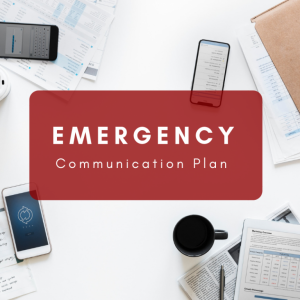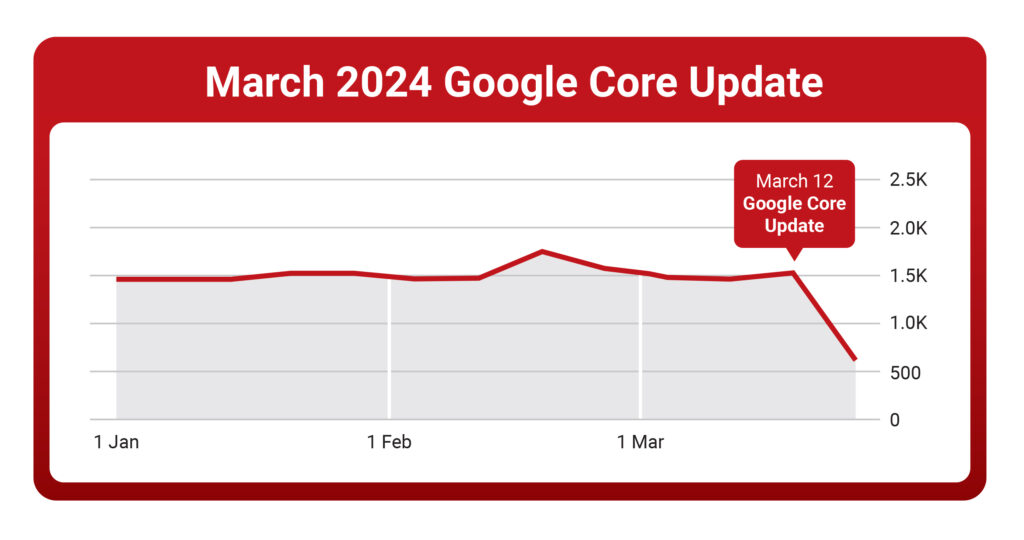In the fast-paced world of corporate crises, effective communication can mean the difference between weathering the storm and enduring lasting damage to reputation and trust.
Yet, even the most meticulously crafted crisis communications plans can falter when put to the test in real-time.
As much as we’d like to avoid them, sometimes Mother Nature and circumstances outside our control have different plans for us. When it comes to an emergency, crisis, or natural disaster, an existing crisis communications plan can make all the difference. With the right tools and resources already in place, you and your organization will be able effectively manage a situation – instead of allowing a situation to manage you.
United Airlines recently found itself thrust into the spotlight with a string of incidents, prompting CEO Scott Kirby to deploy a response aimed at reassuring passengers and stakeholders alike. However, as we dissect the events and United’s subsequent communication strategy, it becomes evident that what ensued was a textbook example of a crisis communications plan gone awry. My analysis delves into the missteps and missed opportunities that left United Airlines grappling for altitude in the face of adversity.

Projecting confidence and reassuring customers
When thinking about crisis communications, I am often reminded of a quote attributed to Michael Cain: “Be a duck, remain calm on the surface and paddle like hell underneath.” That’s pretty good advice. The right plan of action can help you project an air of confidence to your audience. That is so important during uncertain times.
At first glance, Kirby’s message, sent March 19, does well to reassure customers. He smartly dials in on three key themes: safety, culture, and pride. These elements, prominently featured in United’s messaging, aim to reassure both stakeholders and passengers. Additionally, Kirby weaves three crucial facts into the opening of the letter:
- The incidents are unrelated
- The incidents have United’s attention and focus
- Safety remains the highest priority
By stating that the incidents are unrelated, the airline emphasizes its dedication to safety. Never underestimate the importance of taking ownership of a situation. Kirby restating this simple fact matters: “Safety is our highest priority and is at the center of everything we do.” Acknowledging a state of affairs in an authentic way can truly strengthen your relationship with your audience. I give credit to Kirby and his communications team for getting straight to the point.
However, upon closer examination, doubts arise about the coherence of this narrative and the effectiveness of United’s crisis response. Let’s unpack the details of this message to understand its strengths, weaknesses, and implications for the airline’s reputation and public trust.
Providing the right information
During any crisis situation, communication is key – every stakeholder needs (and wants) to be in-the-know. Communicate before (if you have the option), during, and after any situation. If a different type of crisis, such as a public relations crisis, communicate how you are working to resolve the situation. The key is to be as open as you can be. Provide your stakeholders with as much information as possible.

Providing the right information is where United Airlines faltered. In Kirby’s letter to stakeholders, the third and fourth paragraphs are where the messaging takes a nosedive (pun intended). Here, the approach changes. Kirby writes: “these incidents have our attention and have sharpened our focus.” That sounds good, but previously Kirby stressed safety as the highest priority, always. His words suggest the incidents reminded United of the importance of safety.
And then: “Our team is reviewing the details of each case to understand what happened and using those insights to inform our safety training and procedures across all employee groups.” In the previous paragraph, stakeholders were assured the incidents were all unrelated. Yet, United is still reviewing the details to understand what happened. So, were the incidents related or unrelated?
Kirby continues: “This is in addition to some changes that were already planned, including an extra day of in-person training for all pilots starting in May and a centralized training curriculum for our new-hire maintenance technicians. We’re also dedicating more resources to supplier network management.”
If newfound insights will inform new safety training and procedures, does that mean safety training was lacking previously? That does not instill confidence. Additionally, alluding to a supplier network feels like a Bart Simpson move of “I didn’t do it, man.”
A crisis communications timeline
I fly United and Kirby’s letter did not generate the warm fuzzies. If I were consulting with their crisis communications team, I would have advocated for a much stronger statement. One that took ownership. One that set a roadmap for future communications about what their investigations uncover. One that reiterates their brand promise: “When you book with United, we’ve got your back. That’s our customer promise.” Kirby’s message does not make me feel like they have my back. Rather, it feels like they are covering their backsides.
Examining the timeline of the incidents and the release of the letter offers a window into what might have been happening behind the scenes at United. Ten events reportedly occurred within two weeks, but the problems appear to date back to last year, according to a timeline published in Newsweek. I would have expected to see a communication to stakeholders published on March 9, after six significant incidents in five days. However, if that string of incidents had continued, which it did, that would have been catastrophic.
Based on the timeline, it’s possible that United took that following week (and additional three incidents) to inspect the fleet. Perhaps they were busy reviewing the safety of their planes, passengers, and crew instead of issuing communications. And that’s an important undertaking! If so, they ultimately made the right decision to not make a statement until they had an internal handle on what was happening. Still, I remain curious as to why their crisis communications team did not immediately kick into overdrive.
Create a plan, then test it
All in all, if this letter came across my professorial desk, I would give Kirby’s letter to stakeholders a grade of C. It hits the PR buzzwords in the first 100-word takeoff, but then it slides off the runway.
The go-to advice in the world of crisis communications remains true: Be sure to have a plan and know what to do when disaster hits. Here’s a follow-up I would like to advocate for: After you create the plan, test it. Things can change and testing could show gaps in the plan. Do you have backup communication if cell towers are unavailable? How will your message roll out on social media, email, or through other message platforms? Prepare. Know what your team and your business need in order to stay on top of any situation.
Right now, Kirby and his team at United Airlines have an opportunity to make their crisis communications plan even stronger. No one likes to learn from being thrown off the plane without a parachute. But I know United can take this challenge and learn from it.
Another real-life crisis communications example
For better or for worse, my team at Epic Marketing has dealt with many natural disasters and emergencies over the years, both internally and for our clients. We’ve made sure we can be there to support our operations, as well as be there to serve our clients. We’ve refined our process and changed what’s needed to always be available, even when city services aren’t. Whether it is updating websites, posting to social media, or any other type of communication, we have the capability to serve during emergency events.
We cannot stress enough the importance of being responsive and communicative during a crisis situation. How a company responds and reacts to a situation can be more important than the crisis itself.
Several years ago, we collaborated with a full-service financial institution boasting over 20 branches and $1.25 billion in assets to craft a comprehensive crisis communications plan. Little did we know, an armed robbery resulting in injuries would shortly thereafter put our plan to the test. In that moment, the value of our preparation became strikingly apparent.
However, what truly resonated with me was the gravity of the situation for our financial clients. The realization that they could become targets of robbery, placing lives at risk, struck a chord. It was then that the essence of crisis communications transcended beyond managing the media or crafting messages. It became about the vital and transparent dissemination of information, prioritizing people’s safety over stock prices. Contemplating the daunting prospect of navigating a crisis where lives are at stake in an active crime scene, and then witnessing it unfold, solidified my crisis communications ethos.
What’s your crisis communications plan?
As we witness crisis communications spread in real time, we can’t help but think about the preparation, marketing, and communication for this and other types of emergencies. Does your business have a crisis communications plan? Do you know how to communicate with your members or customers, as well as your staff in the event of a natural disaster or another type of crisis?
Marketers and communications specialists can prepare to protect clients and organizations in emergency situations. Organizations must create a crisis communications plan to prepare for natural disasters and other events. Create a plan that works for your business. Detail how you are going to take care of your employees, how you will be able to still serve your members or customers.
Having a plan will help you respond to the unexpected better. And remember, learn, adjust, and update along the way. That’s the best way to ensure a strong landing.
I would love to hear your thoughts on real-world crisis communications management. Have questions or want to talk further? Send an email to connect@epicmc2.com.
This post was originally published September 13, 2018, on the general subject of crisis communications and has since been updated for comprehensiveness and to incorporate real-world examples.





